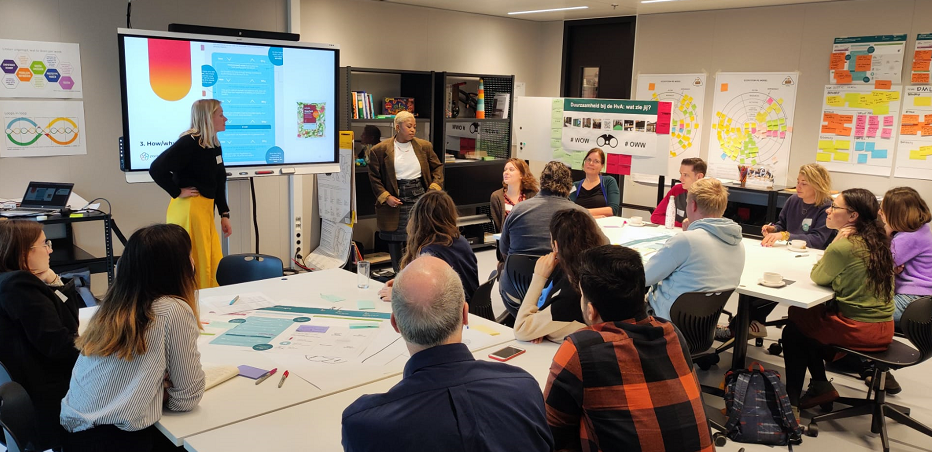KIDV continues as Verpact
November 6, 2025
What are the main challenges and issues on the various routes to intrinsically sustainable packaging? During the second edition of Packalicious Live on 22 March, around 80 participants from business, science, education and government mapped this out. The so-called Packalicious Pioneers do not shy away from radical innovations. They firmly agree: small steps will not get us there, we have to look at packaging differently.
The meeting at the University of Applied Sciences of Amsterdam (HvA) was a follow-up to the first Packalicious Live in November last year. There, Packalicious, the learning community for sustainable packaging, made a start to explore the challenges for the future of packaging. In a nutshell, this means that together we need to move towards intrinsically sustainable packaging: packaging without harming people and the environment. The routes towards this present several issues, which were further brainstormed during this second session to flesh them out.
"We give students an essential role in this brainstorming process," says Petra Veen, project leader Packalicious from The Netherlands Institute for Sustainable Packaging (KIDV). "They are the new generation who often look at problems differently. This is precisely why they can ask critical questions. The transdisciplinary approach is a trademark of Packalicious: scientists from all sorts of disciplines explore the boundaries and possibilities of sustainable solutions, companies know the unruly practice inside out and students offer a fresh perspective on the challenges outlined. We desperately need everyone's perspective."
After a brief introduction by Petra Veen and Packalicious co-founder Maaike Mulder-Nijkamp (University of Twente), participants' inspiration was sparked with two presentations. Ulphard Thoden van Velzen (researcher Wageningen Food & Biobased Research) took the audience through the quest for packaging circularity and the gap between ideology and reality. "We have to be careful when using the term circularity," warned Thoden van Velzen. "It is often only partially understood. Fully circular plastic packaging is a utopia; it is not technically feasible. We simply run into the limits of the system. Therefore, do not consider circularity as something simple." According to Thoden van Velzen, we will not make it with a focus on recycling alone. It is time to also open the routes to bio-based packaging and reusable solutions.
Click here for Ulphard Thoden van Velzen's presentation.
Inge Oskam (lecturer in Circular Design and Entrepreneurship at the HvA) then showed a method for looking at products at a system level - via the Rethink strategy. "The HvA has developed a Rethink tool to help companies come up with new ideas that avoid creating waste in the first place," Oskam said. "The starting point is to look at the underlying needs met by a product-packaging combination. By looking at this need fulfilment at a higher system level, you can arrive at different, more sustainable solutions. It is important to look at the packaging, the product as well as the business model."
One of the examples Oskam mentioned to explain this further is a tube of toothpaste. The product provides fresh breath and reduces the risk of cavities in the teeth. When you apply the basic principles of the Rethink tool, one of the conclusions is that this need can also be met by changing the shape of the product. For example, consider toothpaste tablets in a refillable glass jar.
Click here for Inge Oskam's presentation.
After the presentations, the group split up to work with the Rethink tool themselves using several case studies. Following that, the routes to intrinsically sustainable packaging were further explored through knowledge and work sessions on the following topics:
Research institutes and companies shared their knowledge on these topics and outlined the boundaries and challenges, including NHL Stenden Hogeschool, Van Oordt the Portion Company, Utrecht University, Picnic, Avans Hogeschool/Centre of Expertise Biobased Economy and Avantium Renewable Polymers.
Substantial discussions followed, which were summarised at the end of the day. Of all the discussion points and issues that emerged, participants had to pick one that they would like to explore in more depth. Packalicious is now looking at what is needed for this and how certain parties within the group can further help and strengthen each other. Meanwhile, the next meeting of Packalicious - aimed at more knowledge sharing regarding packaging innovations - is already planned: it will be held on 7 June.
Want to know more about Packalicious? Click here.
